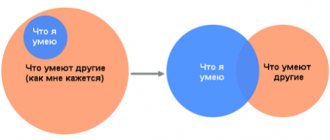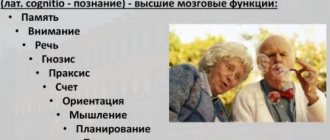Every parent loves to watch their child's development. With every month of his life, the range of his skills and abilities grows. Therefore, if the baby does not speak or uses 2-3 words, adults begin to worry.
Expressive speech in children can be developed late for various reasons. These include organic lesions, psychological stress and much more. With this problem, understanding of spoken speech is preserved. That is, such children can show with a gesture what they need, take their mother by the hand.
General information
In speech therapy, this disorder is identified as general speech underdevelopment (GSD). It can be on several levels. As a rule, it is advisable to talk about problems by the age of three. This is a critical period for speech development. If by this time the situation has not improved, then parents should visit specialists.
First of all, they turn to a neurologist. After which it is advisable to listen to a psychiatrist, audiologist (to determine the level of hearing) and only then a speech therapist.
Not every parent knows what exactly is considered developmental delays. By the age of one year, a child should speak 10 words. Usually they are simple “mom”, “dad”, “give”, etc. The use of onomatopoeia “ava”, “kisa”, “bibi”, etc. is allowed.
By two years, the active vocabulary already consists of 200 words, there is a simple phrase “I eat”, “give Masha”, etc. By three years the figure increases to 800 words, parts of speech, prepositions and some sounds appear.
Speech continues to develop even after three years. Therefore, if it begins to seriously lag behind the norm, it will be difficult to catch up. Problems with speech are fraught with disruption of all other mental functions:
- memory;
- thinking;
- attention, etc.
If a child at three years old has no words or only 2-3, parents should worry and start acting.
Period of phrasal speech
In the second year of life, children pronounce up to 300 words. In their speech, nouns appear in oblique cases, in the plural, imperative verbs, personal pronouns, and adverbs. At the age of two to three years, children correctly use words denoting household items, use them for their intended purpose, name various animals, and know the peculiarities of their behavior. In sentences, case endings of nouns and adjectives are learned, prepositions, function words, conjunctions, and adverbs are used. In the third year of life, the correct pronunciation of phonemes is practiced, especially hissing, whistling sounds, “r”, “l”. In the fourth and fifth years, the formation of a functional speech system is improved, children pronounce long phrases, monologues, and use the conditional form of subordinate clauses. They successfully learn to read and read, and master writing. Starting from the age of three, the grammatical structure of speech is improved and the vocabulary is enriched.
Main reasons
Children's age is sensitive to various kinds of influences. Severe pregnancy, childbirth, illness and head injuries will negatively affect its development.
In recent years, the number of children with such pathologies has only been growing. Experts attribute this to various reasons. Some believe environmental degradation plays a role. Others highlight the main risk factors:
- chronic diseases of the father and mother;
- age of women in labor;
- bad habits (alcohol, drugs, smoking);
- trauma during childbirth.
There are also so-called social factors. An increase in the number of smartphones, tablets, 24-hour television. Many cartoons and games for children with advertising easily attract the attention of the baby. Therefore, they lose the need to study and interact with the outside world.
In many cartoons, acid colors and shrill mechanical voices predominate - all this quickly captures the child and his attention. After which he is of little interest in the ordinary speech of an adult.
When communicating with other children and adults, he looks at the face and unconsciously tries to repeat the movements of the organs of articulation. Without such visual contact, it will be difficult for him to make sounds.
Diagnosis differentiation
Expressive language disorder refers to several possible illnesses. They go under the code F80.1. First of all, this is the actual delay in speech development (SDD). Expressed in the absence of speech or its insufficient level.
The next thing is motor alalia. This is a serious violation that should not be confused with ZRR. It affects specific areas of the cerebral cortex and is visible on MRI. In the case of ZRD, we are talking about the immaturity of the nervous system, but it is successfully overcome and, to some extent, partially eliminates itself.
Another diagnosis that is included in this group is aphasia, that is, speech breakdown. It occurs due to stroke, head injuries and serious illnesses (tumors, meningitis). In children, this disorder is rarely detected. It can appear only closer to school age. Such a disorder will also be visible on MRI, since the cerebral cortex is affected.
It is not always easy to separate mutism from delay. This problem is characterized by normal speech development, but a complete reluctance to use it. This happens for various psychological reasons. Most often, the child agrees to communicate only with certain people, for example, with the teacher. He doesn't use the pointing gesture.
Hearing and intellectual impairments must be excluded. With these disorders, speech may be limited to simple imitation or completely absent.
Some specialists make a diagnosis of LDRD - delayed psycho-speech development. According to neurologists, such a concept does not exist. The child must have either mental development disorder or mental development delay (MDD).
The preparatory period of speech development is divided into 4 stages.
The first stage is unconditional reflex and occurs in the first 2 months of life. In this case, the cry of the child plays an important role, which reflects the dysfunction of various organs, therefore it is of a signal nature and stimulates the functional activity of the auditory zones of the cerebral cortex. The cry of a child causes responses in adults depending on the specific situation. In the second week of the neonatal period, the child should briefly fix his gaze on bright objects, and at one and a half months follow them and turn his head towards the sound source. The second stage is characterized by the appearance of a simple elementary hum and occurs from the second to third months of life. In response to positive stimuli, the child pronounces vowel sounds (s-s-s; a-a-a; uh-e), combinations of vowels and consonants (gu-u; ge-e). All sounds are pronounced while exhaling and require a lot of muscle tension, which helps train breathing. The third stage is characterized by true humming and occurs from the third to the fifth months of life. Differentiation and freedom of movement during this period of a child’s life allows him to peer for a long time at surrounding objects and freely turn his head towards the source of sound. It is as if he listens to his own sounds, perceives them acoustically and kinesthetically. The sounds are pronounced by the child more drawn out and with greater variety. The fourth stage is characterized by babbling and begins at five months of age. The child pronounces combinations of vowels and consonants in the form of short chains (pa-pa, ma-ma, ba-ba), imitates not only his own sounds, but also the sounds of an adult, trains his hearing and articulatory organs. The babbling of a normally developing child turns into speech.
Characteristics of children
Classes with children with speech disorders should begin as early as possible. They are conducted by a speech therapist. To better structure the work, it is necessary to take into account all the features of the violation.
Children with mental retardation have the following characteristics:
- low level of attention;
- limited auditory memory;
- reduced cognitive interest.
The semantic and logical part of thinking is usually normal, but following instructions of 3-4 steps is difficult. The sequence may change or certain elements may be lost.
Non-critical motor impairments may be observed. Such children are awkward, slow, and do not perform complex sequences of actions well.
There are also problems with the development of fine motor skills. Interest in drawing is reduced, lacing and other delicate actions are difficult.
In the absence of timely treatment and correctional assistance, secondary intellectual impairment occurs. The later a speech therapist appears in a child’s life, the more difficult it will be to compensate for the defect.
Medical and psychological support is required. A competent neurologist will help correct the functioning of the nervous system, and a psychologist will develop mental functions such as memory, thinking, attention.
A specific description of the child’s problems will allow specialists to competently organize their actions.
Sample work plan
The disorder is based on problems with all parts of speech. Therefore, at the first stage, it is important not only to practice sound pronunciation, but also to evoke any response speech. Even in the form of elementary onomatopoeia.
Be sure to develop the child’s perception. To do this, he is introduced to different materials. For example, they let you sort through cereals, beads, and sand. You can show fruits and vegetables, offering to smell, touch, and taste them.
The development of fine motor skills directly affects speech, since these two areas of the cortex are located nearby in the brain.
The more impressions there are in the baby’s life, the better. The main thing is not to overdo it. Excessive emotions provoke stuttering.
At the first stage, the speech therapist’s task is to create a desire to contact and interact. To do this, they use finger theater, toys and simple onomatopoeia, like “Who says what?”
In severe cases, children do not use the pointing gesture. In this case, they forcefully take the hand, fold their fingers and point at the toy or picture with the index finger.
The Novikova-Ivantsova technique has proven itself well. It is based on singing vowel sounds. With motor alalia, it is sometimes difficult for children to make a certain arrangement of the organs of articulation. In this case, it is done forcibly. The adult uses his fingers to purse his lips and move the child’s jaw.
Don't be afraid of crying or other negative emotions. This is a normal reaction due to the immaturity of the cerebral cortex.
After you manage to get the first words, you need to try to build phrases. For example, showing a picture and saying: “Mom, go.” Be sure to achieve not only the reproduction of the phrase, but also the understanding of what was said.
The child must be able to correlate the image and the phrase. Only then will his speech develop. Work is definitely underway to practice sound pronunciation. To begin with, they work on the sounds of early ontogenesis: vowels, back-lingual (“K”, “G”, “X” and soft pairs), labials (“V”, “F” and others).
Articulation gymnastics in front of a mirror is mandatory. From the first lessons, the speech therapist teaches the child to control himself. Only after this will you be able to achieve results.
Correctional work to eliminate expressive speech disorder lasts 2-3 years. In severe cases, it takes up to five years. Parents also need help, since only they are able to conduct classes every day and do homework with the child.
Sometimes at school age there may be difficulties with writing and reading, which are expressed in specific errors. In this case, a speech therapist will help.
Children with speech impairments, what is mental retardation in children, delayed speech development?
Speech is a form of communication between people using sound and visual signs, the highest
cortical function that arises during work activity. The formation of speech occurs through the interaction of the mechanisms of speech perception and its reproduction.
Types of speech, impressive speech, expressive speech
There are 2 main types of speech : impressive and expressive. Impressive language (comprehension process) involves understanding spoken language and reading. Expressive speech (the process of utterance) begins with an intention or thought, which turns into inner speech and is then recoded into verbal form and embodied in a speech utterance. In the implementation of the speech function as a whole, various parts of the cerebral cortex of the dominant and non-dominant hemispheres take part, but the role of each of them is different, which is especially clearly manifested in various speech disorders.










